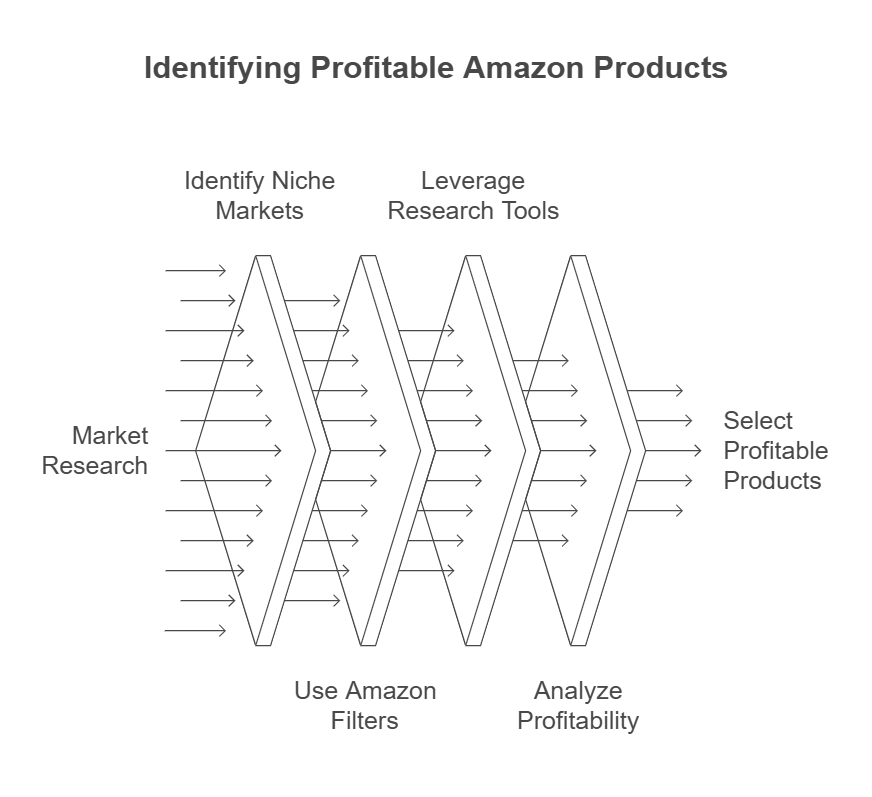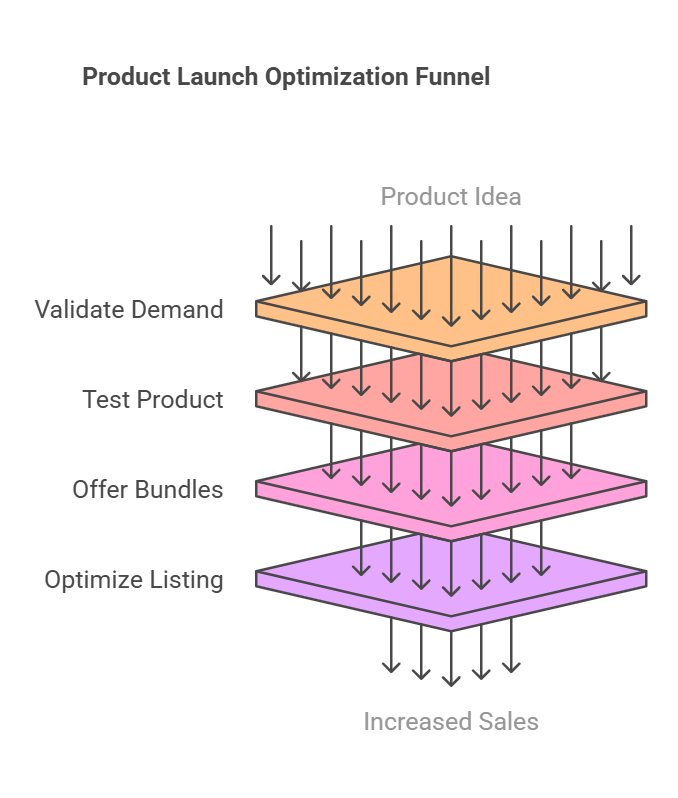Article
How to Find the Best Low-Competition, High-Profit Products for Amazon

Share
How to Find the Best Low-Competition, High-Profit Products for Amazon
When you want to begin a thriving Amazon business, one of the most important things you need to do is select the best products. But locating the holy grail of low-competition and high-profit products seems like a challenge. Well, don’t worry because, with the proper strategy, tools, and mentality, you can find products that not only possess lower competition but also have great margins.
Throughout this guide, we’ll take you step-by-step through how to locate the most profitable low-competition products to sell on Amazon. From research tools to learning how a product can be profitable, we’ve got you covered.
Begin with Market Research
Before you get into product research, it’s great to have a good idea of your target audience and Amazon’s latest trends. Find out what kinds of products consumers are currently looking for. This will give you an idea of where to center your categories.
Tools to Use:
Amazon Best Sellers: Look at Amazon’s Best Sellers page, which gives you a list of popular products across different categories. This gives you an idea of what’s popular right now.
Google Trends: Look at what’s popular on the web. It’s not Amazon-specific but will give you an idea of consumer interest in some products.
Jungle Scout: A paid tool where you can monitor product performance, spot trends, and see levels of competition.
Concentrate on Niche Markets
Targeting niche markets is an excellent method of discovering low-competition products. Rather than targeting broad, highly competitive categories (e.g., electronics), try targeting subcategories that may be less saturated but still have a consistent demand. For instance, rather than selling “fitness equipment,” search for particular sub-niches such as “yoga blocks” or “kettlebell sets.”
How to Identify Niche Markets:
Customer Reviews: Read customer reviews on best-selling products to understand common issues faced by people. These learnings can assist you in discovering unusual products that fix particular pain points.
Keyword Research: Utilize tools such as Helium 10 or MerchantWords to find long-tail keywords. Such keywords have lower competition but also generate traffic.
Search for Trends: You can also use tools such as Trend Hunter or Kickstarter to find up-and-coming trends in niche markets that might be profitable.
Utilize Amazon's Search and Filtering Features
Amazon offers a variety of tools and filters that you can use to identify high-potential products. Begin by searching for products in a given category, then filter your results using criteria such as the number of reviews, ratings, price range, and sales volume.
Key Points to Examine:
Sales Rank: Find products with a good sales rank but not the best. These products have consistent sales without intense competition.
Number of Reviews: Products with few reviews might mean less competition, but ensure there is sufficient demand to make it worth selling the product.
Profit Margin: Determine the cost of the product (shipping, Amazon fees, manufacturing) to calculate your possible profit margin.
Leverage Amazon FBA Product Research Tools
There are many paid and free tools that enable you to explore further Amazon’s marketplace and discover low-competition products with high profit potential.
Popular Tools for Product Research:
Jungle Scout: Provides information about product sales, reviews, competition, and other things that help you identify profitable products.
Helium 10: An in-depth tool suite that assists you in tracking keywords, understanding how products perform, and discovering the least competitive products.
AMZScout: A software product that specializes in analyzing sales statistics and identifying probable product opportunities in Amazon.
These resources can assist you in sorting through big sets of data so that you can find low-competition products with decent profit margins.
Analyze Profitability Using the 3x Rule
One of the simplest methods to decide if a product is worth offering for sale is by using the 3x Rule. According to the rule, for a product to be profitable, the price of the product (plus all expenses, shipping, Amazon fees, etc.) should be at least three times the cost of the product.
For example, if a product costs you $10 to manufacture and ship, your selling price should be at least $30 for the product to yield a good profit margin.

Validate Product Demand
Once you have a product idea in mind, it’s important to validate its demand. Just because a product looks promising on paper doesn’t mean it will sell. Validate the demand by:
Monitoring Competitor Sales: Observe how well your competitors are performing. Are they receiving a large number of reviews? Is their product always best-seller ranked on Amazon?
Using Google Keyword Planner: Use the tool to analyze the search volume for your product or keywords related to your product. If there is steady demand, it’s a positive indicator.
Social Media and Forums: Look at social media sites, online forums such as Reddit, or review sites on Amazon to determine if there’s a population of individuals who frequently post about or search for this kind of product
Test Your Product Idea
Test it with a small inventory before committing fully to a new product. This will provide you with an idea of how it performs and if you can profitably scale it. Amazon has wonderful flexibility with its fulfillment programs, so you can test products without a large initial investment.
Think About Offering Bundles:
Product bundling allows you to mitigate competition by forming a distinct bundle. For instance, if selling yoga mats, you can pair it with straps or a bag. This serves to differentiate from the competition as well as increase your average order value.
Optimize Your Listing
Once you’ve found a winning product, your next step is to optimize your Amazon listing. A well-optimized product page can improve visibility and sales. Focus on the following:
Title: Make sure your product title is clear, concise, and includes relevant keywords.
Bullet Points and Description: Highlight the benefits and features of your product in an easy-to-read format.
High-Quality Images: Use high-quality images that showcase your product from different angles.
Reviews and Ratings: Get your customers to review, since positive ratings can enhance your product’s credibility and ranking.

Conclusion
Discovering the greatest low-competition, high-profit products for Amazon is not an overnight thing, but with the right research, tools, and strategy, you can find hidden gems that will lead to success. Concentrate on niche markets, apply the correct product research tools, and see to it that products possess good demand and profitability potential.
By applying these strategies, you’ll be well on your way to building a sustainable and profitable Amazon business.